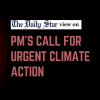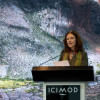How will our climate budget look post-NAP2050?

Two facts related to climate-relevant funding in Bangladesh fascinate me. First, between 2015-16 and 2022-23 fiscal years, Bangladesh allocated 7.26-8.1 percent of its annual national budget as climate budget, which is 0.7-0.8 percent of the national GDP. Second, 18 years ago, the National Adaptation Programme of Action (NAPA) estimated to invest $73.5 million in climate change adaptation over the following few years. But such strategic planning magnified manyfold in October 2022, when the government approved the National Adaptation Plan, 2023-2050 (NAP2050), targeting to spend $230 billion over the next three decades.
Since the government is now preparing its annual national budget for FY2023-24, what changes can we expect to see in the climate-relevant allocations, post-NAP2050?
I think we can expect three specific achievable changes in the forthcoming climate budget. First, in the current fiscal year, with a total climate budget of Tk 30,500 crore, the three ministries or divisions (out of 25) with the highest climate allocations are Ministry of Agriculture (Tk 8,667 crore), Local Government Division (Tk 3,768 crore), and Ministry of Water Resources (Tk 3,484 crore). In addition, the climate budget also shows allocations against six thematic areas of the Bangladesh Climate Change Strategy and Action Plan, 2009. Here, the highest allocation is made to food security, social protection, and health (41.87 percent), followed by infrastructure (27.78 percent), mitigation and low-carbon development (13.36 percent), comprehensive disaster management (7.21 percent), capacity-building and institutional strengthening (6.71 percent), and research and knowledge management (3.07 percent). These thematic allocations broadly match the ministerial allocations.
In the FY2023-24 budget, we also need to see the geographical distribution of the climate allocations. The NAP2050 contains the latest climate vulnerability maps of Bangladesh considering a wide range of shocks (e.g. cyclones and floods) and stresses (e.g. rise of sea level and salinity intrusion), prepared by the Center for Environmental and Geographic Information Services (CEGIS). The CEGIS can help the Finance Division to prepare maps combining climate fund allocations against the degree of climate vulnerability. These maps should carry information down to the upazila level, if union-level information is not available for now. We indeed need to know how much money is going to Dhaka and how much to Dacope (Khulna), Derai (Sunamganj) or Dimla (Nilphamari).
Second, in the forthcoming climate budget, a separate section should be added on investments to be made in nature-based solutions (NbS) to tackle climate change. Here, NbS means to protect, restore, create, and manage aquatic and terrestrial ecosystems to adapt to climate change impacts as well as reduce carbon dioxide in the air, while increasing the local biodiversity. Focusing on NbS has two specific rationales. First, the NAP2050 has already included NbS as one of its six main goals. Second, unlike climate finance, our conservation finance is poorly defined and is essentially made of project-based, short-term investments.
The Ministry of Environment, Forest and Climate Change and its concerned departments are showing low interest in sustainable conservation financing. Therefore, we are not going to see much progress in establishing new funds as outlined in the Ecologically Critical Area Management Rules, 2016, the Protected Area Management Rules, 2017, and the Bangladesh Biodiversity Act, 2017 any time soon. But the Kunming-Montreal Global Biodiversity Framework, agreed upon by 188 countries in December 2022 in a global biodiversity meeting in Montreal, Canada, emphasises conservation finance to minimise the current annual gap of $700 billion.
By incorporating NbS allocations into Bangladesh's climate budget, we can essentially bring together financing of two biggest crises of our times: climate emergency and biodiversity loss. The environment ministry should work with the finance authorities to develop a tool to collate investments in NbS by different government agencies every year. Our experience of preparing climate budgets should be useful here.
Over the last two years, Bangladesh has developed two climate-related investment plans: the draft Mujib Climate Prosperity Plan 2030 (MCPP2030) and the NAP2050. The climate budget for FY24 should track how many of these financial targets have been achieved or have received commitments from donors and development partners. If we look into the NAP2050, about 72.5 percent of the $230 billion fund has to be invested by 2040. This means the country needs to triple its current yearly investment, which now stands just above $3 billion.
In 2016, with FAO and USAID, the environment ministry prepared the Bangladesh Country Investment Plan for Environment, Forestry and Climate Change (EFCC-CIP). This CIP was supposed to be accompanied by a monitoring mechanism to track investments in these sectors until 2021, but it didn't work out. Based on past experience, the ministry and FAO can work with the finance authorities to develop a monitoring and reporting tool to track investments to implement the NAP2050.
The NAP2050 is an ambitious plan with 113 priority actions in crucial sectors ranging from water, disaster management, agriculture, nature conservation and urban, to policy, institution, capacity-building and research. If the NAP2050 can't make us rethink the way we prepare our climate budget, that will be a missed opportunity.
Dr Haseeb Md Irfanullah is an independent consultant working on environment, climate change, and research systems.

 For all latest news, follow The Daily Star's Google News channel.
For all latest news, follow The Daily Star's Google News channel. 










Comments